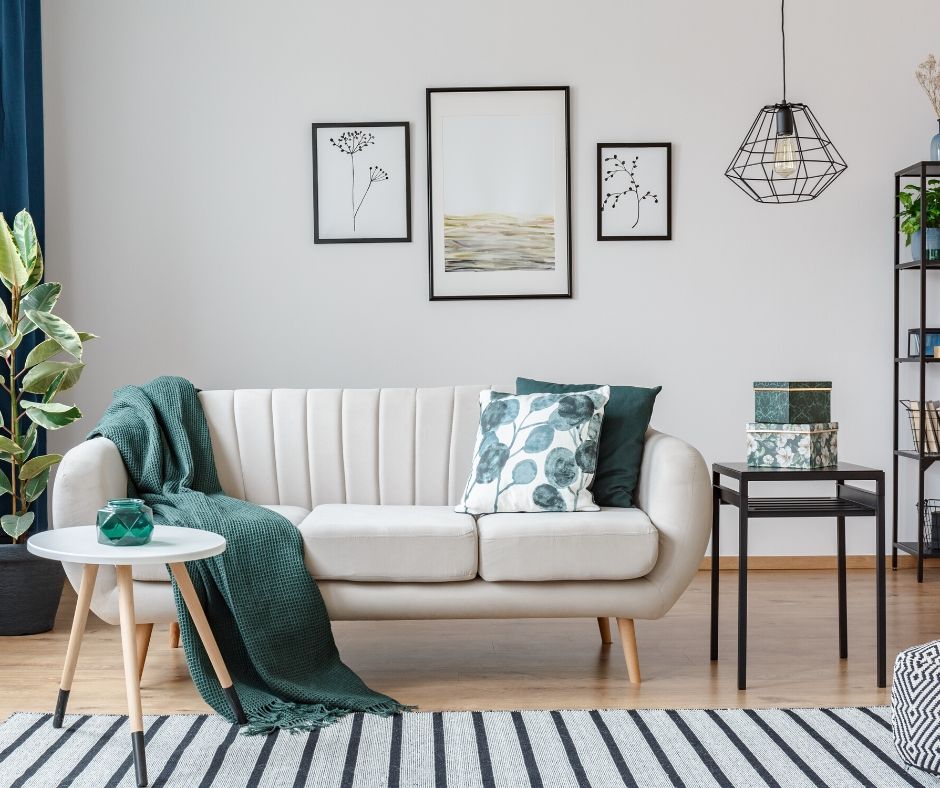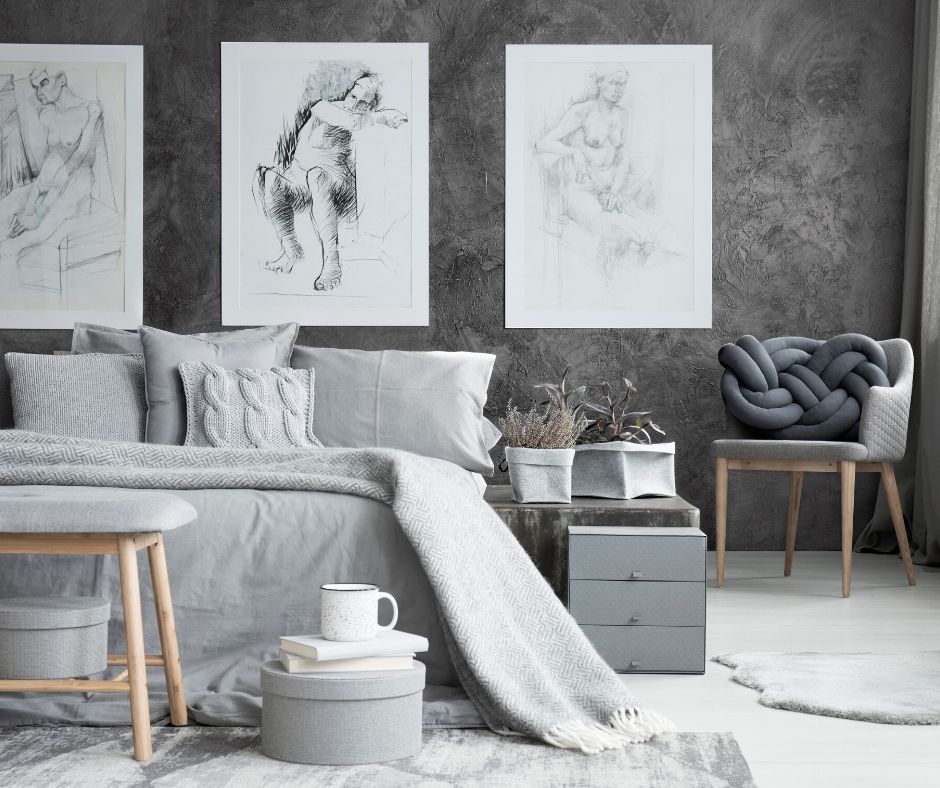Why You Should Hire an Interior Designer: A Comprehensive Guide
Has COVID-19 got you thinking about redecorating your home? Personally I believe in the wisdom of hiring an interior designer. They will give you a professional assessment of your needs, help you budget and plan, and be a liaison between you and a myriad of vendors. Hiring an interior designer can help you save time and save money by streamlining the process and avoiding unnecessary expenses. With professional help, you can prevent costly mistakes and avoid making costly mistakes, ultimately adding value to your home.
Of course, everyone wants to end up with a “wow home.” A good interior designer can deliver the wow factor and help you achieve your dream home by focusing on your specific needs and the client’s vision.
Here are a few of my tips to guide you through the process. I know these steps are important because of my personal experiences! Home improvement and home renovation projects, especially during times like COVID-19, can benefit greatly from expert guidance in interior decor, ensuring your space is tailored to your specific needs and the client’s preferences.
Let’s Start From the Beginning
It all started very innocently with a comment from my husband, Shelly!
“I think it’s time we replace the carpet in our apartment, Honey.”
I felt sparkles of enthusiasm rush through me and replied with delight, “That is a great idea! Oh! You know I would love wood floors instead of carpeting!” Many houses can be completely transformed through a new project with the help of a professional, turning a simple update into a major improvement for the house.
With reluctance, like all men, he replied, “Ok, but get a price from a decorator.”
I felt another adrenalin rush; but came down to earth thinking to myself, “No interior designer will just do the flooring!”
So I boogie – boogied the pot and naturally figured out a plan! Don’t we always, darling?
My sister-in-law just completed her apartment! Her decorator might do us a favor! I thought to myself, “I will ask Shelly to convince him!” I knew he would.
My husband made the call. The decorator said yes and we set up our first meeting. Starting a design project or home renovation can feel daunting, but working with a professional makes projects like these much more manageable. Whether it’s a new home or updating an existing space, the right guidance ensures the project is a success.
Introduction to Interior Design
Interior design is so much more than simply choosing pretty colors or stylish furniture—it’s a sophisticated field that blends creativity, technical knowledge, and a deep understanding of how spaces work. A professional interior designer brings a wealth of expertise to the table, from mastering the latest design trends to knowing which materials will stand the test of time. Designers are constantly updating their knowledge to offer clients fresh ideas and innovative solutions, ensuring every project is unique and tailored to the client’s lifestyle. Whether you’re looking to refresh a single room or transform your entire home, a good interior designer can help you create a space that reflects your personal style and enhances your daily life. With their keen eye for aesthetics and detail, professional interior designers can turn your vision into reality, making your home both beautiful and functional.
My Last Experience With an Interior Designer
To backtrack, my last experience with an interior decorator turned out to be a two-year love fest. Shelly and I built a home in California with the perfect team of professionals led by the brilliant interior designer, Richard Himmel, who was chosen by Architectural Digest as the “Decorator of the Sixties.” A good designer with design expertise and experience can create great design by carefully creating interiors that reflect the client’s style and needs.
Dick had timeless taste and was revered by clients across America. I loved this man. Dick and I were in sync. We enjoyed every minute of working together because I ‘got him’ and he ‘got me’. And that is the way it should be when you hire a decorator.
Meanwhile, ‘back at the ranch,’ the new decorator arrived on the scene. He walked through the apartment and very excitedly said, “Oh grey wood floors will look marvelous with your present color scheme of whites and touches of color. Carpet is so out of Vogue!”
And then he went for the jugular, continuing excitedly, “Would you consider updating and recovering some of your furniture? I can see changing the fabrics in your living room, buying a ‘new’ coffee table, and replacing your card table and chairs! An experienced interior designer considers existing pieces, selects the right color palette, and incorporates lighting to enhance the overall interior decor.
And in the den, let’s buy a stunning, modern style, zebra area rug to place over your new grey wood flooring. Modernize the lampshades and definitely put in a larger TV screen and new fabric on the furniture!” He ended with this punch line, “Let’s make the den really sexy!”
Sounded good to me and to my husband. But, I had a somewhat sinking feeling because he was not Richard Himmel. I felt stuck because I did not want to insult my sister-in-law, so I rationalized (I so wanted to upgrade our condo!) that I could make him understand my style.
When working with a team, interior designers coordinate with contractors and project managers to handle multiple tasks and ensure the job is completed efficiently, utilizing their resources and knowledge of architecture.
The final design is created through collaboration with the family, ensuring the space planning and styles suit everyone’s preferences.
Role of an Interior Designer
The primary role of an interior designer is to create an interior space that is both functional and visually appealing, perfectly suited to the client’s needs and preferences. A skilled designer listens carefully to what the client wants, taking into account their lifestyle, tastes, and specific requirements. By working closely with clients, interior designers ensure that every detail—from the layout to the finishing touches—serves a purpose and contributes to the overall harmony of the space. The designer’s goal is to transform ordinary rooms into extraordinary environments that not only look stunning but also feel comfortable and practical for everyday living.
Rules to Live By
RULE 1: Choose a decorator like you choose your husband! Carefully! Your husband makes your life. Your decorator makes your home.
This means taking your time to:
- Show him through your home.
- Ask to see a portfolio of his work.
- Talk to his clients.
- Inquire about billing processes.
- Ask for his professional website. (This separates the men from the boys.)
The more questions you ask, the fewer surprises you will have. You are spending a lot of money to live ‘your way,’ not ‘his way!’ Most people find that working with a designer who truly understands the client’s vision and needs leads to the best results.
Needless to say, we hired him. At our first meeting, he brought me fabric samples.
To backtrack again, when I worked with Dick, he took me to the furniture mart and boutique shops and on and on where we (Shelly included) picked out everything together. I felt fabrics, walked on carpets, opened chest drawers, sat on chairs and couches for comfort, turned on lamps, etc. in several designer showrooms. You must too. Therefore:
RULE 2: Do not allow your interior designer to bring samples of fabrics or pictures to your home for your preview.
My husband and the decorator signed a contract. They haggled back and forth. Never feel intimidated by asking the designer to make changes. He knows you will! Trust me on this… he will budge.
When visiting showrooms and selecting materials, working with a designer gives you access to exclusive resources and trade-only discounts, which can help you save on purchases and avoid costly mistakes.
There are three ways to pay your designer: free, percentage, and hourly. Look for a professional website(s) to educate yourself before signing any agreement. But, remember this rule of thumb: you will probably spend more than you anticipated.
RULE 3: A contract between you and your interior designer is for both of your protection. Hire a designer who is a member of The American Society of Interior Design. Be realistic about your budget.
You must enforce the following rule, but I have never spoken to a friend who has not complained about this front, including yours truly.
A well-drafted contract ensures the client’s needs and expectations are clearly defined and protected, helping to avoid misunderstandings and disputes during the project.
Sometimes delays happen. For instance, they ordered the wrong armoire for our bedroom! The painter accidentally misread an important instruction and painted over an entire mirrored wall in our foyer! Our zebra area rug, loomed in Nepal, was destroyed by the earthquake! Our new bed does not properly fit our mattress!
RULE 4: Request a timeline for your project.
This is an absolute must. Put a finishing date in your agreement but don’t bank on it. Interior designers are notorious for not being able to keep their promises. But, because my husband put a finish date in the contract, most of our apartment was completed by the deadline.
Don’t aggravate yourself over things you cannot control. Everything will get done… it is just a matter of time.
RULE 5: Just let go!
Everything will eventually get done.
As I walk through the completed rooms of our apartment, I often think of my designer idol, Richard Himmel, wishing he were here to put his finishing touch here, there and everywhere. And then I think, he left me with his knowledge… and I will try and do it for him.
Design Process
The design process with a professional interior designer typically starts with an in-depth consultation, where the designer gets to know the client’s needs, preferences, and budget. This is the time to discuss your dreams for the space, any must-have features, and how you plan to use each room. Once the designer has a clear understanding of your vision, they’ll begin to create a mood board—a visual collage that brings together images of furniture, materials, color palettes, and inspiration. This mood board helps you see how different elements will work together, making it easier to make decisions and get excited about the transformation ahead. Throughout this process, the interior designer will guide you, offering expert advice on materials, furniture, and design options that fit your style and budget.
Next Steps
After the initial concept and mood board are approved, the next step is to develop a comprehensive design plan. This plan includes detailed specifications for furniture, materials, and layouts, as well as a clear budget and project timeline. Your designer will work closely with you to review every aspect of the project, ensuring that nothing is overlooked and that the final design aligns with your expectations. Adjustments can be made along the way to accommodate your feedback or any new ideas that arise. By collaborating with your designer, you can create a space that is not only beautiful but also perfectly tailored to your needs, making the most of your investment and ensuring a smooth, enjoyable design journey from start to finish.
Stay Safe
Remember, we are in the middle of a pandemic. However, you can still be safe while working with professionals. Have them wear a mask while in your home (yourself included), make sure they take their shoes off before they enter, and of course, make sure they haven’t traveled and have not been sick.
If you take the necessary precautions, you can start decorating your space with a an interior designer’s help, today!

If you enjoyed this story about hiring an interior designer, please subscribe to our email list. Once a day, when I post a new story, you will receive it in your inbox!



As an interior designer, I will speak for my brothers and sisters in thanking you for sharing your thoughts and experiences.
You are very welcome. Warmly, Honey